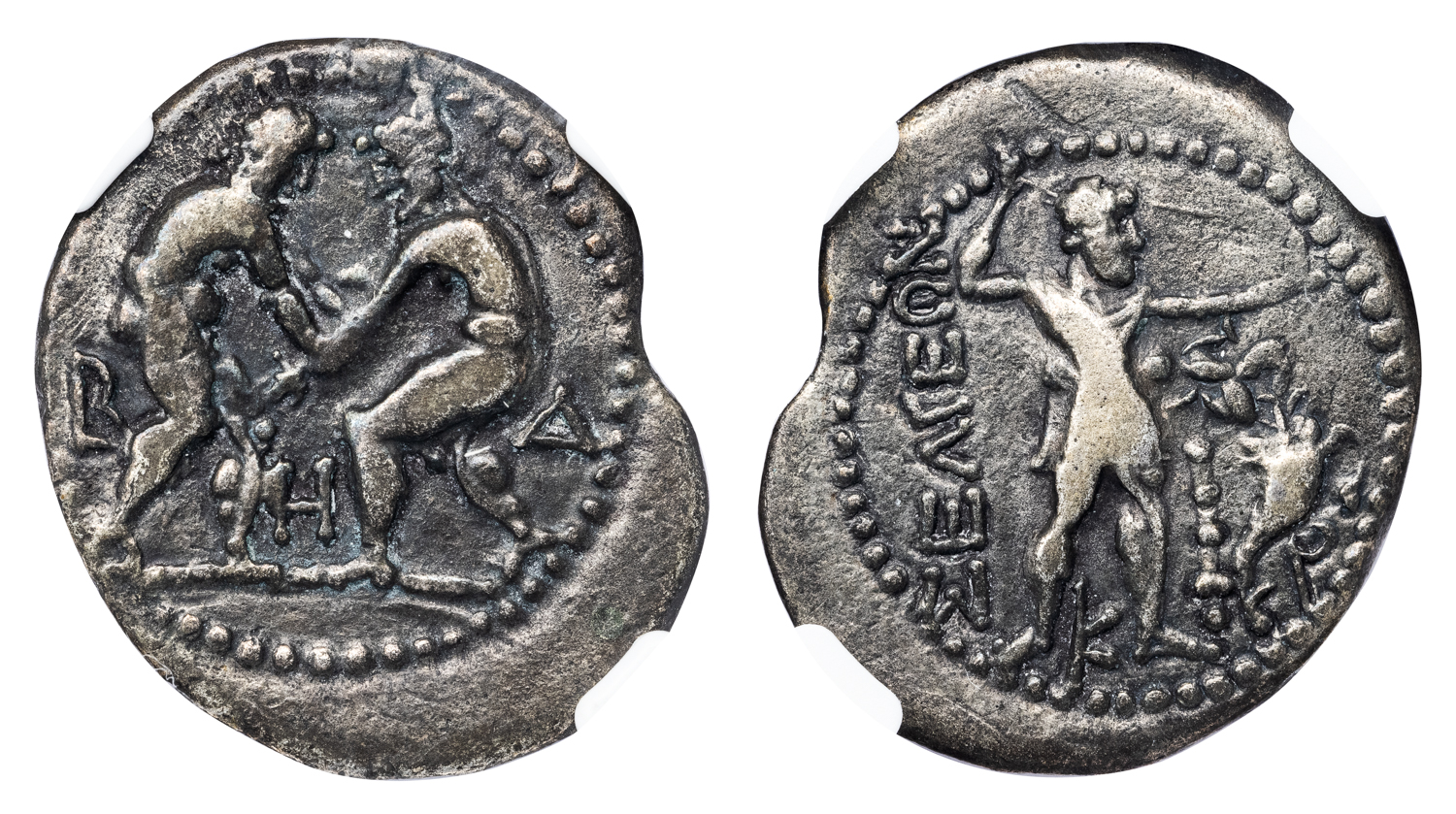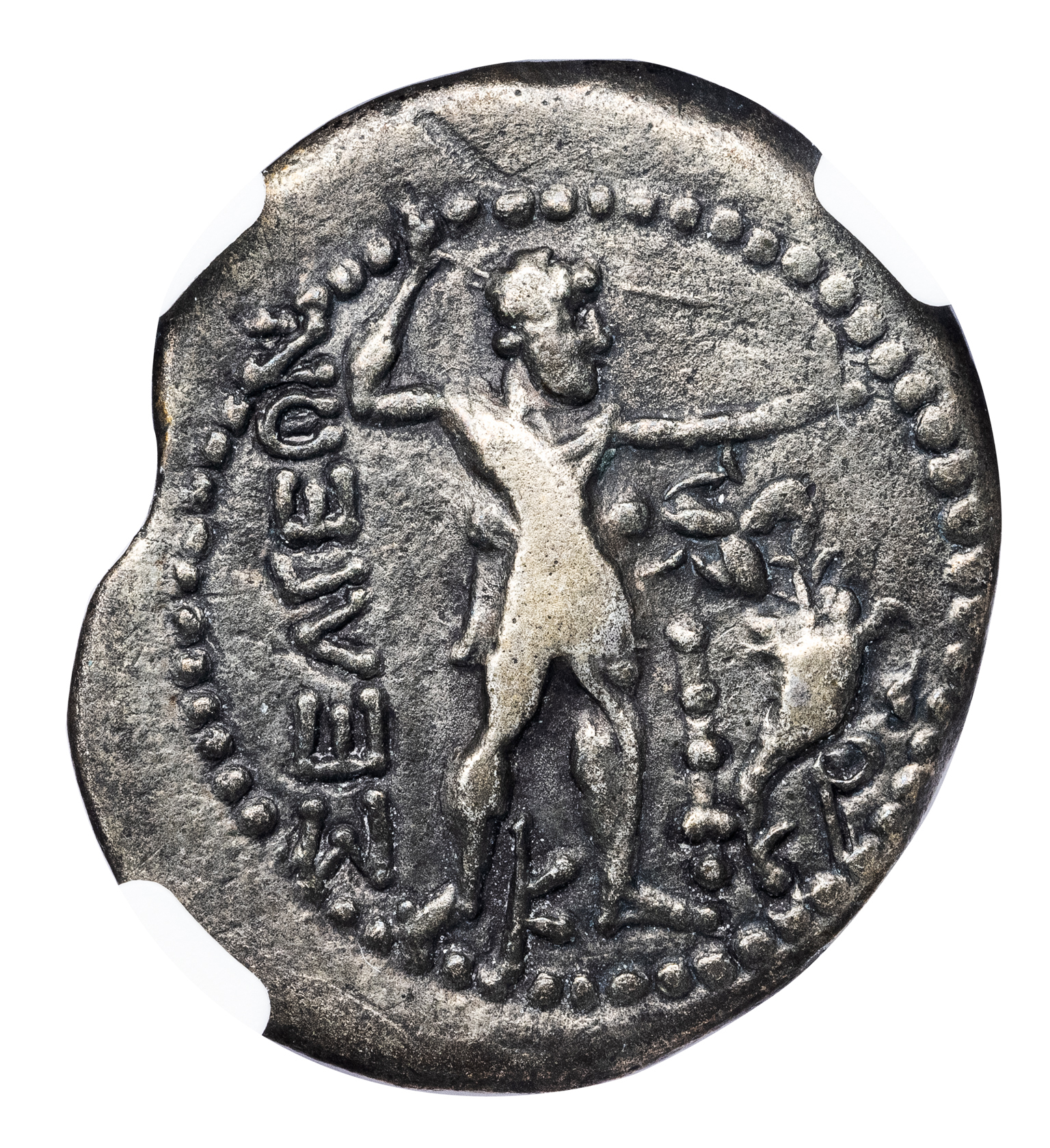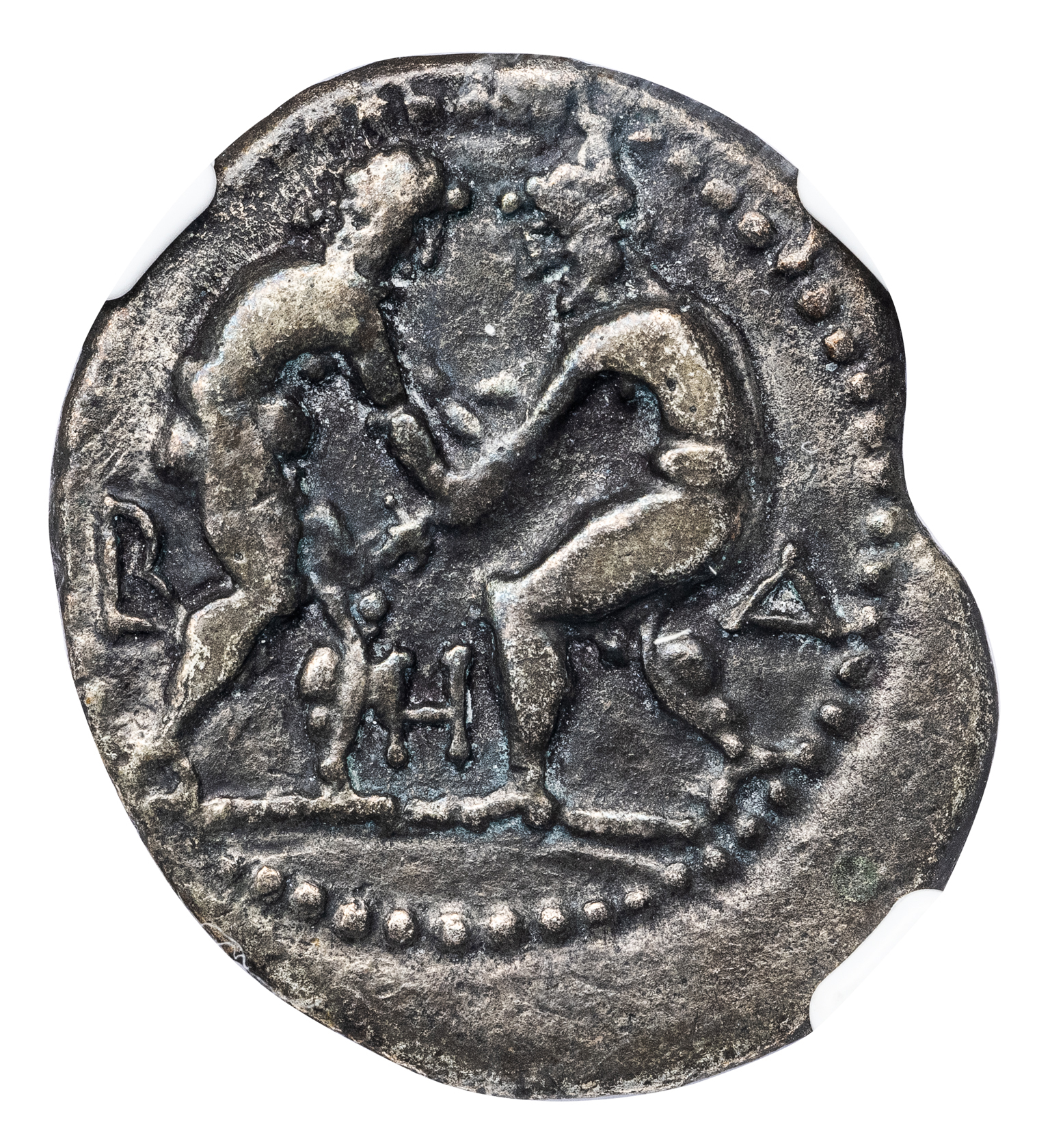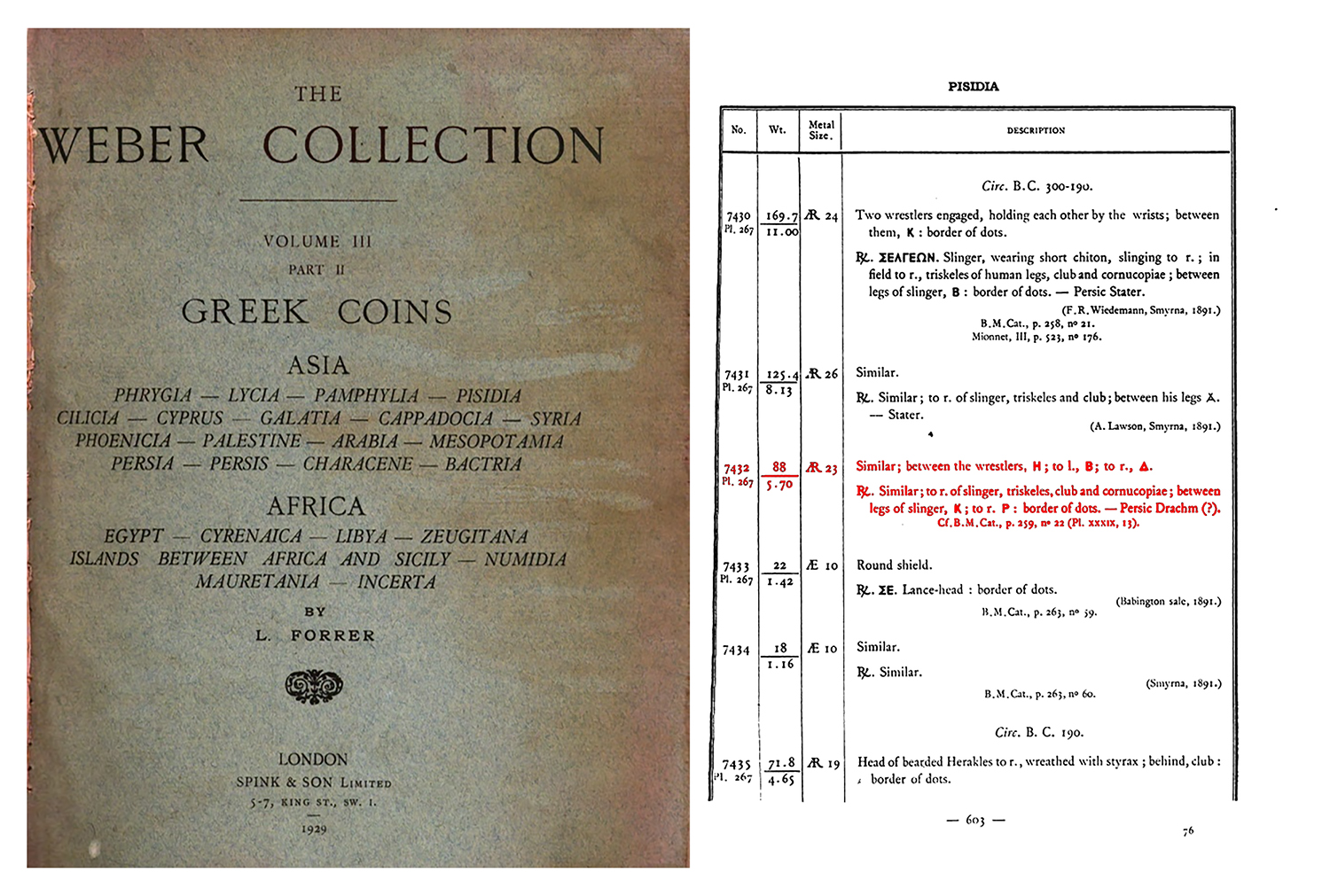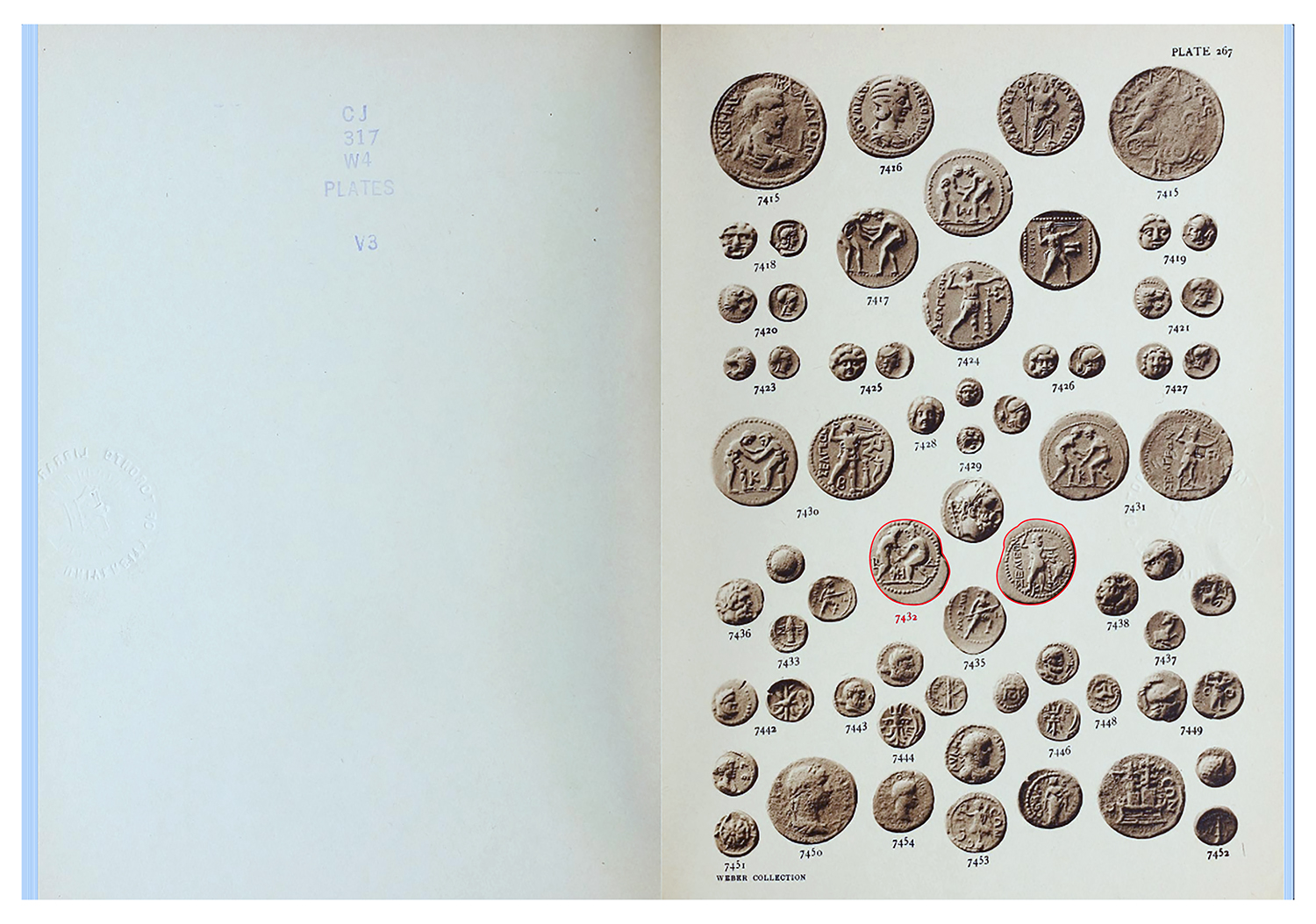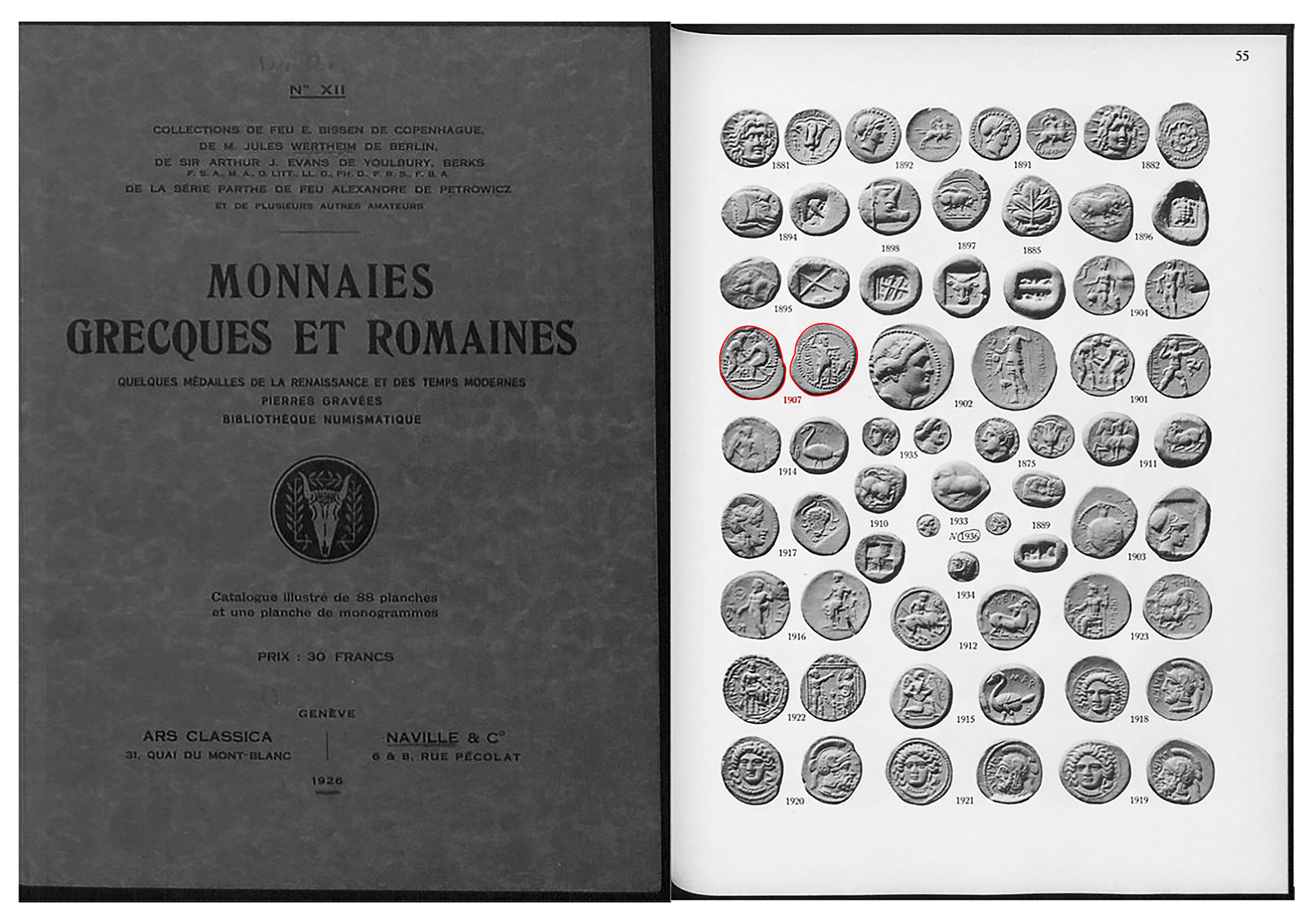SELGE SILVER STATER – RARE VARIETY EX WEBER COLLECTION AND ARS CLASSICA SALE OF 1926 – CHOICE FINE NGC GRADED GREEK PSIDIA COIN (Inv. 20017)
$1,900.00
20017. PSIDIA. SELGE. Ca. 325–250 BC.
Silver Stater, 5.67, g, 24 mm.
Obv. Two wrestlers in combat, B in left field, H in lower center field, Δ in right field. Rev. ΣΕΛΓΕΩΝ, slinger right, preparing to shoot, K between legs, triskeles, club and filleted cornucopia in right field.
Weber Collection 7432 (this coin); SNG France 1944.
Ex Hermann Weber 7432 = Naville, Ars Classica XII, 10/18/1926, lot 1907 (this sale included collections of Bissen, Wertheim, Arthur Evans and Petrowicz) .
NGC graded CHOICE FINE, Strike 5/5, Surface 4/5, the prestigious Weber and Ars Classica provenance noted on label, rare variety with only four specimens appearing on CoinArchives.
The wrestler staters of Aspendus and Selge have long been a source of interest to numismatic scholars. G. F. Hill originally suggested that the wrestlers represented a statuary group erected in Aspendus honoring two wrestlers named Menetos and Elupsa. He based his view on an issue (SNG von Aulock 4568) bearing the inscription MENETΥΣ EΛΥΨA, which he took to be personal names. This seems improbable since issues struck before the emission with this legend show the wrestlers in a wide variety of different poses. More likely, the type serves to celebrate a wrestler from Aspendus who was victorious in the Olympic games or perhaps in some other, less famous contest. It was not uncommon for cities and rulers to celebrate such triumphs on their coinage, as in the case of the mule chariot on coins of Messana, the biga on Macedonian staters of Philip II, and the pancratiast’s gloves on bronzes of Smyrna. In the fifth century BC, Aspendian coinage had become very influential in Pamphylia and Pisidia, leading Selge to produce its own series of staters with the same types.

